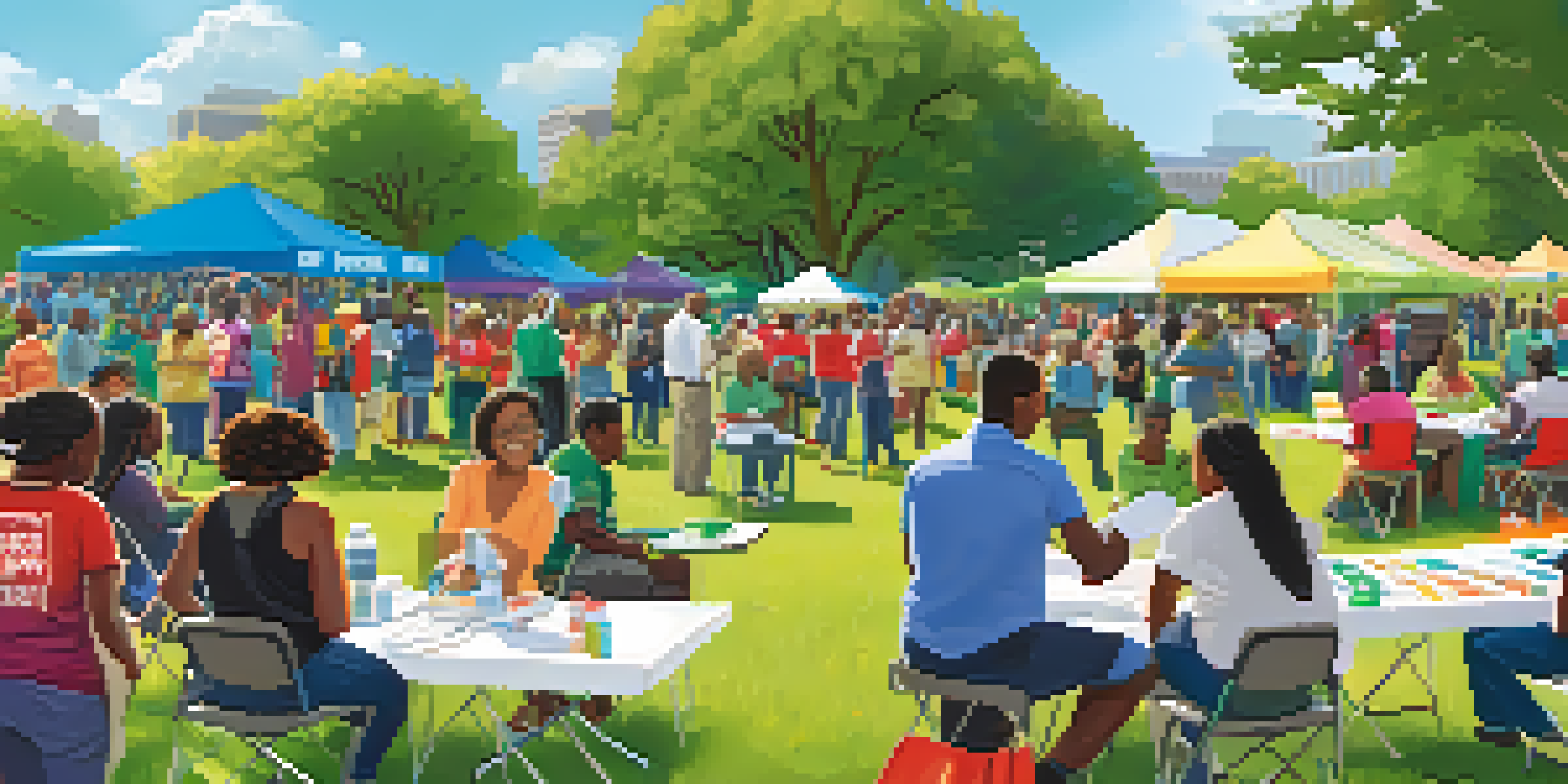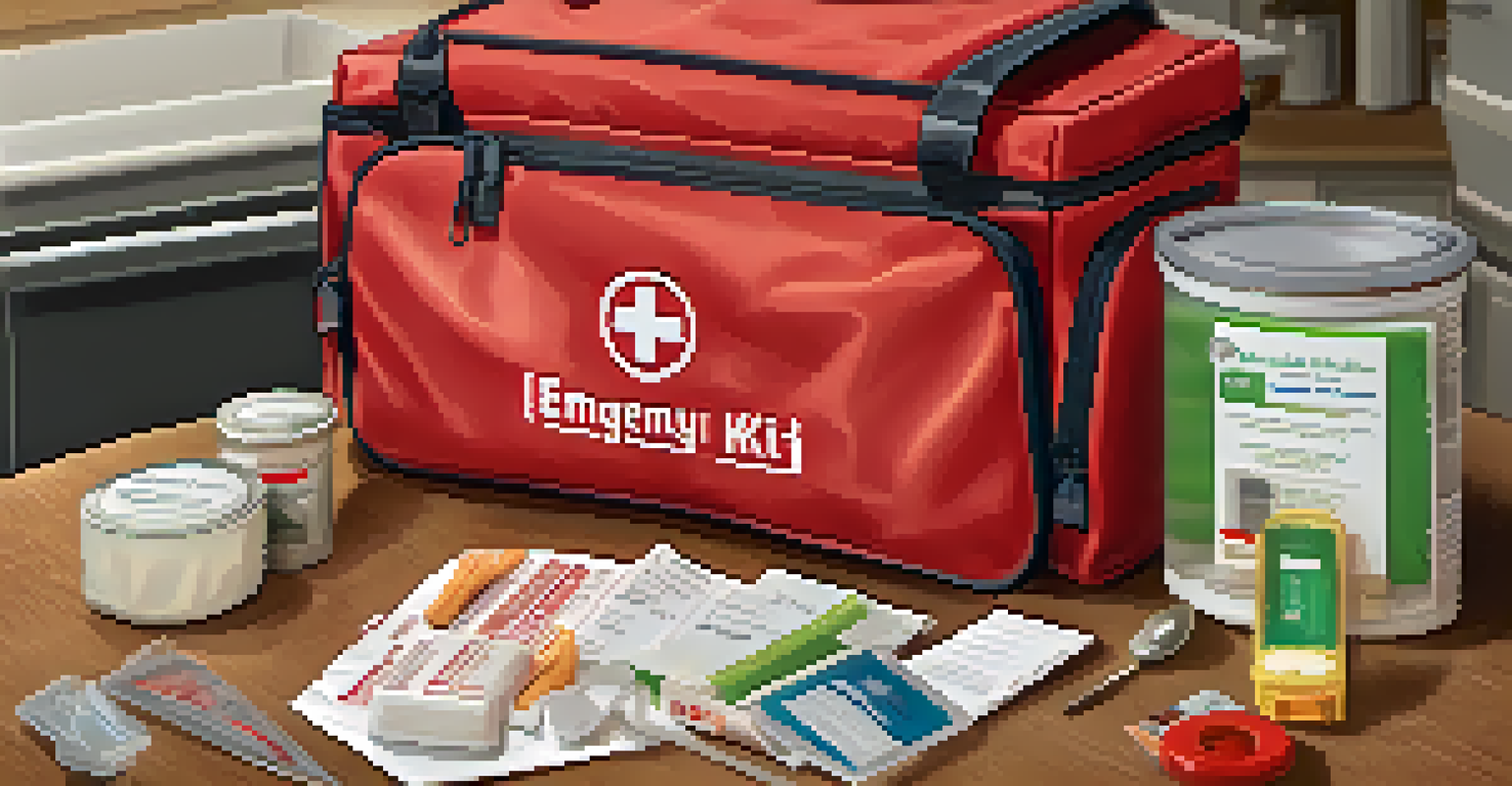Atlanta’s Disaster Preparedness: Strategies for Resilience

Understanding Atlanta's Unique Disaster Risks
Atlanta faces a variety of disaster risks, from severe thunderstorms to tornadoes and even flooding. Given its geographical location, the city experiences a mix of natural disasters that can disrupt daily life. It's crucial for residents to understand these risks to prepare effectively.
An ounce of prevention is worth a pound of cure.
For example, the infamous tornado that struck downtown Atlanta in 2008 serves as a stark reminder of the potential devastation. Knowing the types of disasters that are most likely to occur can help residents devise a tailored preparedness plan.
Moreover, education about these risks can empower citizens, ensuring they know how to respond when disaster strikes. By fostering awareness, Atlanta can build a more resilient community.
The Role of Local Government in Preparedness
Local government plays a pivotal role in disaster preparedness through planning, resources, and training. Atlanta has established emergency management systems that help coordinate responses during crises, ensuring that all agencies work together effectively. This collaborative approach enhances the city's overall resilience.

Additionally, the city invests in infrastructure improvements, such as reinforcing bridges and upgrading drainage systems to mitigate flooding risks. These proactive measures not only protect residents but also instill confidence in the community.
Understanding Local Disaster Risks
Atlanta residents must be aware of the various disaster risks, like tornadoes and flooding, to prepare effectively.
Community engagement is another critical aspect, with local government hosting workshops and drills. These initiatives provide valuable training and encourage citizen involvement in enhancing the city's disaster resilience.
Community Engagement and Preparedness Initiatives
Community involvement is essential for fostering a culture of preparedness in Atlanta. Initiatives like neighborhood preparedness workshops and local hazard assessments empower residents to take action. When communities come together, they can share resources and knowledge, making everyone safer.
The best way to predict the future is to create it.
For example, local organizations often host events where residents can learn how to create emergency kits or develop communication plans. These hands-on experiences make the concept of preparedness feel less daunting and more achievable.
Building strong community ties also means better communication during an emergency. Neighbors who know each other are more likely to check in and help one another in times of need, reinforcing the city's resilience.
Developing a Personal Emergency Plan
Creating a personal emergency plan is a vital step for every Atlanta resident. This plan should include essential information such as emergency contacts, meeting points, and evacuation routes. Having this information readily available can make a significant difference in a crisis.
Consider a family emergency kit, stocked with food, water, and first-aid supplies. This kit should be accessible and tailored to the specific needs of your family, ensuring everyone knows where to find it when disaster strikes.
The Role of Community Engagement
Community involvement in preparedness initiatives fosters a culture of safety and strengthens resilience during emergencies.
Regularly reviewing and updating your plan is just as important as creating it. As circumstances change—whether it's a new family member or a change in your living situation—ensuring your plan remains relevant can save lives.
Utilizing Technology for Disaster Preparedness
In today’s digital age, technology can significantly enhance disaster preparedness. Atlanta residents can leverage apps and online resources to stay informed about weather alerts and emergency updates. These tools make it easier to access critical information quickly.
For instance, emergency notification systems can send alerts directly to your phone, ensuring you're always in the loop. Social media platforms also serve as valuable resources for real-time updates during a disaster, connecting residents with vital information.
Moreover, technology can help streamline communication among family members. Using group messaging apps ensures everyone knows what to do and where to go in the event of an emergency, providing peace of mind.
The Importance of Training and Drills
Regular training and drills are vital components of disaster preparedness in Atlanta. These exercises equip residents with the skills and knowledge needed to respond effectively during a crisis. Participating in drills can help reduce panic and confusion when an actual disaster occurs.
Local organizations often conduct drills that simulate various emergencies, allowing participants to practice their response plans. This hands-on experience reinforces the importance of preparedness and builds confidence in individual and community capabilities.
Importance of Personal Emergency Plans
Creating and regularly updating a personal emergency plan can significantly enhance individual and family safety in crises.
Moreover, training fosters a sense of community and shared responsibility. When people come together to prepare, they strengthen their connections and create a support network that can be invaluable during a disaster.
Building a Culture of Resilience in Atlanta
Ultimately, building a culture of resilience in Atlanta requires a collective effort from individuals, communities, and local government. By prioritizing preparedness and fostering a proactive mindset, residents can significantly reduce the impact of disasters. This culture encourages everyone to take responsibility for their safety and well-being.
For instance, sharing personal experiences and lessons learned can inspire others to take action. When people see their neighbors preparing, they're more likely to join in and contribute to community resilience initiatives.

By investing in education, resources, and community engagement, Atlanta can create a city where preparedness is woven into the fabric of daily life, ensuring that everyone is ready when disaster strikes.